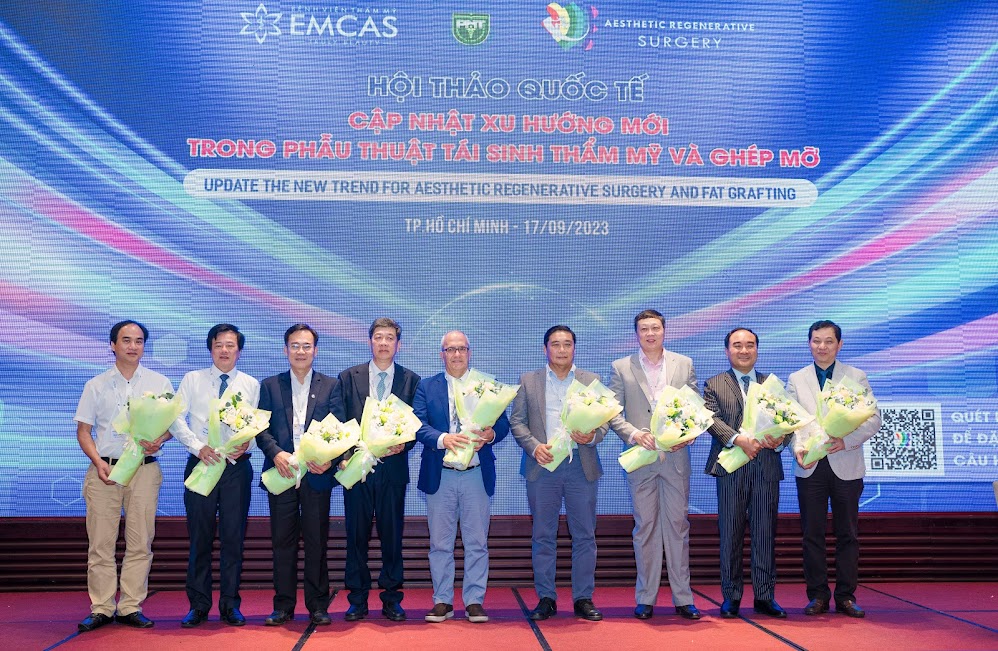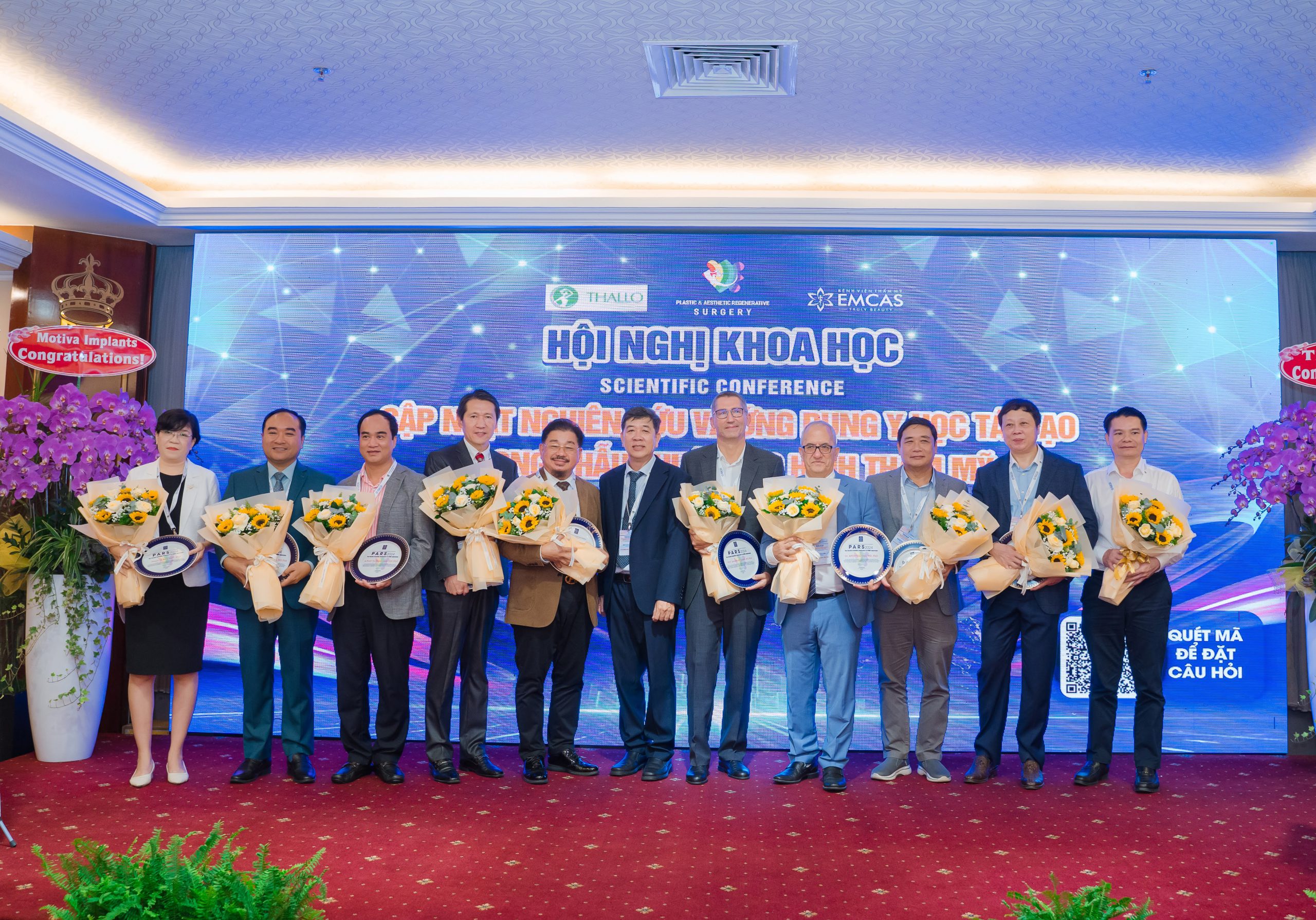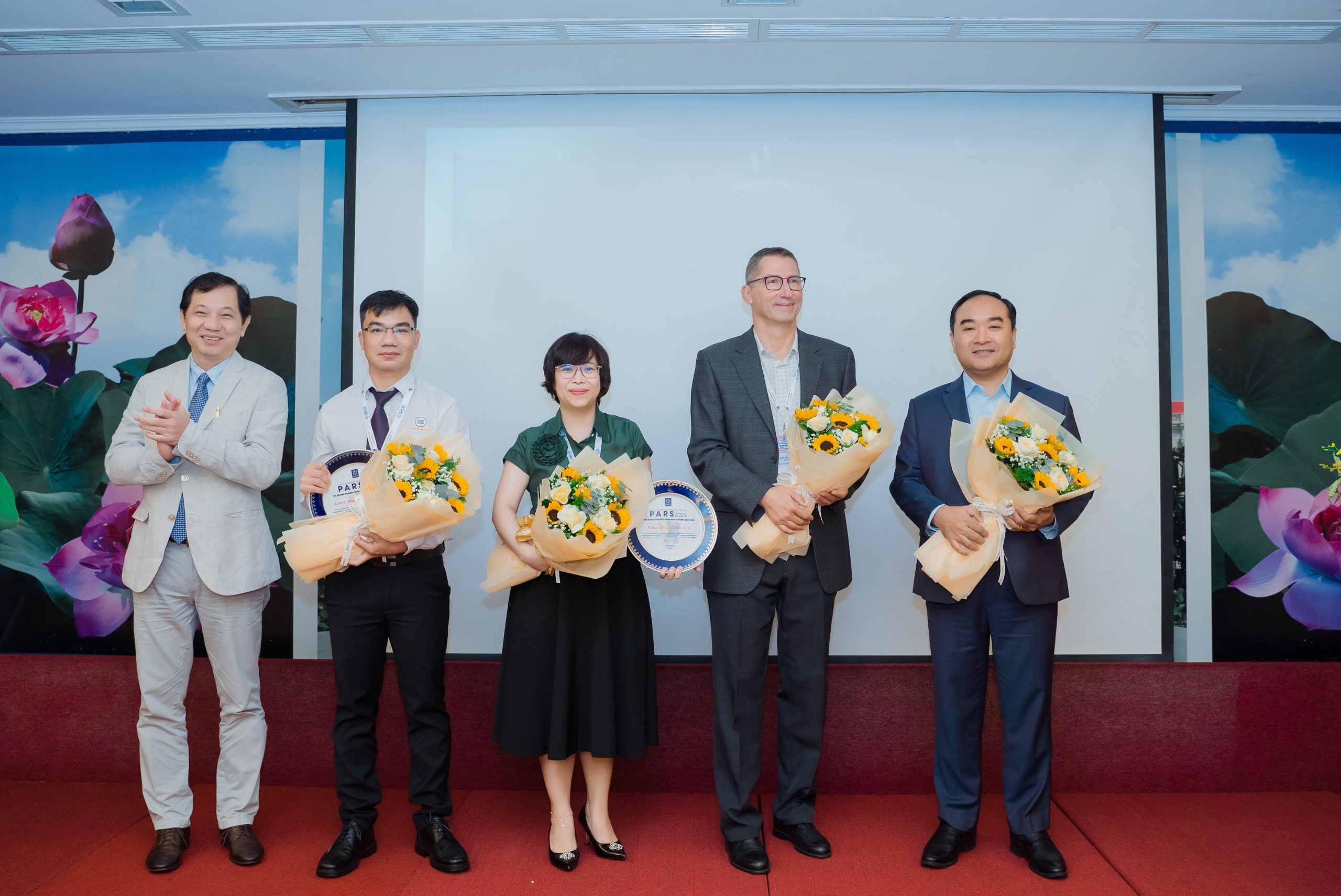INTRODUCE
Distinguished Professors, Esteemed Colleagues, Ladies and Gentlemen,
Regenerative Surgery is a relatively novel and rapidly evolving branch of reconstructive, plastic, and aesthetic surgery. The term “regenerative”—which we have chosen to translate as “tái sinh” in Vietnamese—reflects the biological activity of cells capable of regeneration. Simultaneously, it resonates with the concept of “reconstruction”, particularly when utilized in combination with tissue engineering technologies that enable volumetric restoration. This surgical discipline first emerged approximately 30 years ago and has since witnessed exponential growth and diversification. Scientists globally have reached a consensus that the ultimate goal of regenerative surgery is to heal or replace tissues and organs damaged by disease, trauma, or congenital anomalies.
Regenerative surgical strategies aim to incorporate novel biomaterials, in vitro-cultured cells, or isolated autologous cells—often in conjunction with biochemical factors that promote cellular differentiation or proliferation. In many cases, combinations of these modalities are employed to restore both the structure and function of deficient tissues or to facilitate endogenous regeneration. Some approaches also focus on stimulating the body’s innate healing response, redirecting it towards full anatomical and functional recovery.
In aesthetic and reconstructive plastic surgery, regenerative approaches most frequently involve adipose tissue and adipose-derived stem/stromal cells (ADSCs), applied alone or in synergy with biological scaffolds or platelet-rich plasma (PRP). Globally, regenerative techniques have become part of routine clinical practice, often representing the gold standard in managing specific conditions—from breast reconstruction and wound healing to facial rejuvenation and body contouring.
Let us briefly reflect on key historical milestones in the development of aesthetic regenerative surgery:
- 1950: Dr. Lyndon Peer conducted the first scientific studies on the viability of fat grafts.
- 1997: Dr. Sydney Coleman standardized the fat grafting process and introduced the term LipoStructure.
- 1998: The first course on autologous fat grafting was held in Marseille, France, led by Dr. Guy Magalon.
- 2001: Dr. P.A. Zuk and colleagues demonstrated the presence of stem cells in adipose tissue—identified as ADSCs and part of the stromal vascular fraction (SVF).
- 2002: The International Federation for Adipose Therapeutics and Science (IFATS) was founded.
- 2006: The first international symposium on fat grafting titled “Fat Injection, Expanding Opportunities” was held at the 17th annual EURAPS meeting, organized by Dr. R.F. Mazzola.
- 2007: Dr. G. Rigotti published the first study on the therapeutic role of ADSCs in radiation-induced tissue damage.
- 2009: The first textbook dedicated to fat grafting applications—From Filling to Regeneration—was published by S.R. Coleman, R.F. Mazzola, and Lee L.Q. Pu.
- 2011: The American Society of Plastic Surgeons (ASPS) and the American Society for Aesthetic Plastic Surgery (ASAPS) issued a joint statement affirming the safety and efficacy of fat grafting and stem cell use in breast surgery. The International Society of Plastic and Regenerative Surgeons (ISPRES) was founded.
- 2013: Dr. S.F. Kølle conducted the first randomized, placebo-controlled clinical trial demonstrating the efficacy of ADSC-enhanced fat grafting.
- 2017: Dr. Owen Ung pioneered the use of scaffold implants in breast aesthetic and reconstructive surgery.
The PARS Conference (Plastic & Aesthetic Regenerative Surgery) takes its name from the landmark publication Plastic and Aesthetic Regenerative Surgery and Fat Grafting – Clinical Application and Operative Techniques by Dr. Amin Kalaaji, released in 2022. This forum provides clinicians a valuable opportunity to present and publish their work in leading peer-reviewed journals.
At PARS 2023, themed “Emerging Trends in Aesthetic Regenerative Surgery and Fat Grafting”, we were honored by the participation of renowned speakers including Dr. Amin Kalaaji, Assoc. Prof. Dr. Pham Hieu Liem, and Assoc. Prof. Dr. Nguyen Dinh Tung.

In 2024, the second edition of the conference focused on “Research and Applications of Regenerative Medicine in Aesthetic Plastic Surgery”. We had the privilege of learning from distinguished international experts such as Prof. Lee L.Q. Pu, Dr. Amin Kalaaji, Prof. Owen Ung, and Prof. Jaroslav Michalek, who provided insights spanning foundational science to the latest clinical innovations. Alongside them, 10 leading Vietnamese experts in the field delivered groundbreaking presentations, including: Assoc. Prof. Dr. Le Hanh, Prof. Dr. Tran Thiet Son, Assoc. Prof. Dr. Vu Ngoc Lam, Assoc. Prof. Dr. Nguyen Hong Ha, Assoc. Prof. Dr. Pham Hieu Liem, Assoc. Prof. Dr. Nguyen Dinh Tung, Assoc. Prof. Dr. Vu Quang Vinh, Assoc. Prof. Dr. Pham Van Phuc, Dr. Pham Le Buu Truc, Dr. Le Thi Bich Phuong


Today, PARS 2025 brings together leading minds once again under the theme: “Safety and Efficacy of Regenerative Medicine Applications in Aesthetic Plastic Surgery.”
We are honored to welcome esteemed international guests:
- Prof. Dr. J. Peter Rubin
- Prof. Dr. Kotaro Yoshimura
- Prof. Dr. Fabio Santanelli di Pompeo
- Dr. Michael Wagels
And from Vietnam:
- Assoc. Prof. Dr. Le Hanh
- Assoc. Prof. Dr. Nguyen Hong Ha
- Major General, Assoc. Prof. Dr., Meritorious Physician Vu Ngoc Lam
- Assoc. Prof. Dr. Pham Hieu Liem
- Assoc. Prof. Dr. Nguyen Dinh Tung


We sincerely hope that PARS 2025 will serve as a platform for academic excellence, global collaboration, and knowledge exchange. It is a valuable opportunity for Vietnamese surgeons to engage with world-class researchers, keeping pace with the dynamic and ever-evolving field of aesthetic plastic surgery—particularly in the area of regenerative medicine.
Thank you for your kind attention.
We wish all participants a fulfilling and inspiring experience at PARS 2025, and a joyful Mid-Autumn celebration here in Ho Chi Minh City.
On behalf of the PARS 2025 Organizing Committee
Assoc. Prof. Dr. Nguyen Dinh Tung
SPONSORS
Thank you to our sponsors!




